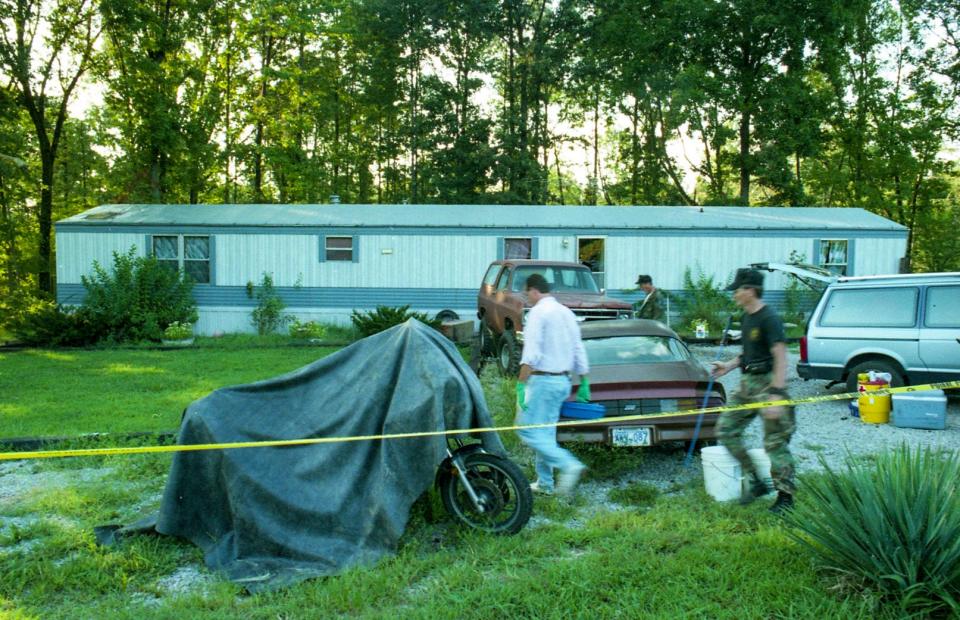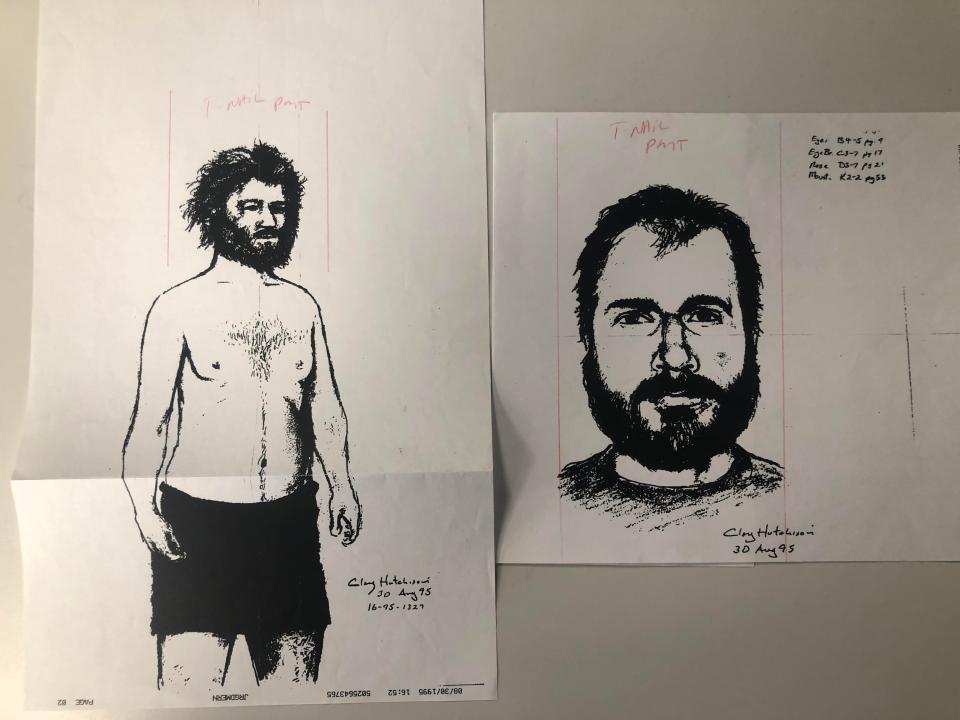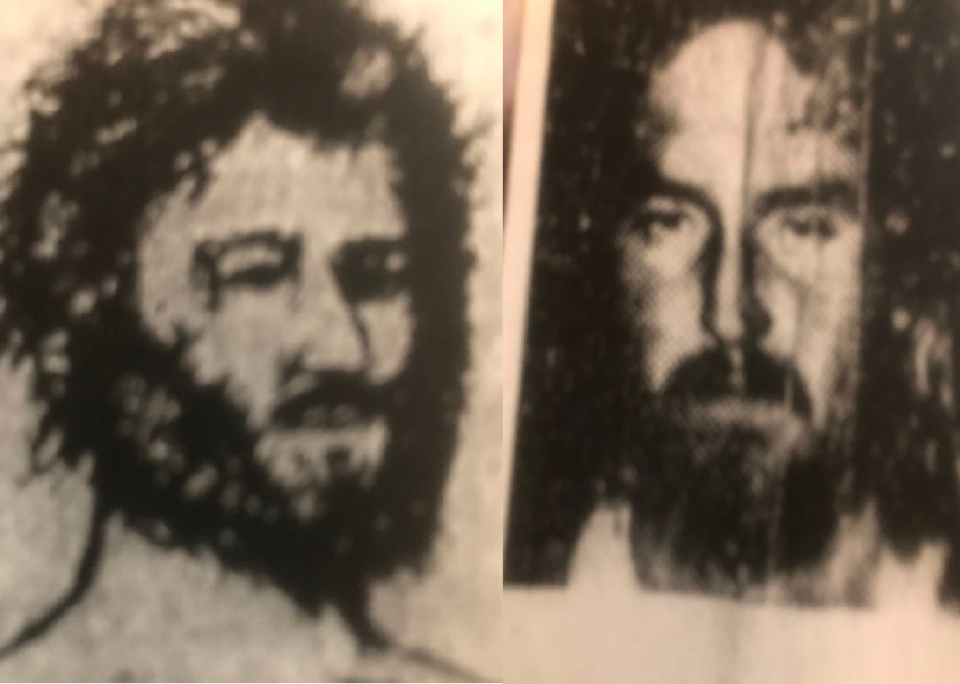Recording: Lawyer in Heather Teague case raised doubts about police sketch, raid
William Polk was calm but adamant: his client, Marty Dill, “does not fit the description. At least the description that’s been released.”
“He’s shorter. He’s lighter. He does not have a bushy beard. He does not have bushy hair,” the Henderson County attorney told Kentucky State Police officials on Aug. 31, 1995, mere hours before police would raid Dill’s home. “His beard is very short. And his hair, I’m told, is now very short.”
Polk – like everyone else in the Tri-State that late summer – was discussing the disappearance of Heather Teague: a 23-year-old Clay, Kentucky, woman who had been sunbathing on Newburgh Beach on Aug. 26 when an Indiana resident peering through a telescope across the Ohio River reportedly saw a heavily bearded man with wild hair and a gun emerge from the dunes and drag the former homecoming queen into the woods.
Investigators quickly turned to Dill. He was a 30-year-old with a criminal record who had sported a mountain-man look in the past and owned a red Ford Bronco that matched the description of one seen at the beach that day.

With the help of the FBI, trained dogs and a probable cause affidavit, police planned to raid Dill’s trailer in Poole, Kentucky, search the Bronco, and comb the property for any sign of Teague.
But in previously unreleased, 28-year-old audio obtained by the Courier & Press, Polk asked them to reconsider their plans.
Dill didn’t just look different from the police sketch of the supposed perpetrator, Polk said. He was also a danger to himself.
If KSP attempted to arrest him during a nighttime raid, Dill might commit suicide, the attorney told them. When confronted by his family about Teague’s disappearance, Dill had allegedly booted everyone from the home, cut off contact, and holed up inside with a butcher knife and .22-caliber gun.
Officials should go during the day, Polk said. He even offered to knock on Dill’s door and talk to him himself. And to show he was working in good faith, he told police where they’d find the Bronco – shrouded in the woods, just behind the trailer.
But in the recording, which the Courier & Press received from Heather’s mother, Sarah – who herself obtained KSP’s case file through 2017 after a lawsuit – officials said trudging out there in the daylight could put officers at risk.
In the end, KSP forged ahead. And Polk’s fears turned out to be warranted.
Around 1 a.m. on Sept. 1, state troopers surrounded the squat mobile home. By 3:15 a.m., Dill had been declared dead from a self-inflicted gunshot wound. No sign of Teague was found on the property, and the case has languished in purgatory ever since.
Kentucky State Police didn’t respond to requests for comment for this story, and Polk died in 2018. The day of the raid, however, Henderson County Attorney Charles McCollom told the Evansville Courier that investigators had no choice but to go forward.
“They had no idea where Heather Teague was or whether she was dead or alive,” he said. “Time was working against them.”
An Ohio connection in the Teague case: 27 years after disappearance, police to send items in Heather Teague case for DNA testing
The police's sketch in the Heather Teague case
Time, of course, hasn’t slowed down since.
Aug. 26 marked 28 years since Heather Teague vanished. Since then, Sarah Teague has spent that grueling stretch searching wooded areas and even lifting the lids of oil tankers, desperate to find any trace of her daughter. She’s combed through the case file and filed hordes of public-records requests to obtain recordings.
It took her more than two decades to finally hear the conversation described above. For her, it confirmed one of her main beliefs in the case: Dill doesn’t match the description of the man police say abducted Heather.
Allegedly using the description provided by the man peering through the telescope, investigators drew up two composite sketches four days after Heather’s abduction. One showed a shirtless caveman-looking figure with tumbleweed hair and an unkempt beard. The other depicted a man in close-up, with cropped-but-untamed hair and a shorter beard.
But Sarah Teague has long said the police based those drawings not off eyewitness accounts, but from Marty Dill’s driver’s license photo – which KSP disputes.
Sure, Marty looked like that in the past, she said. But not by late summer of 1995.
She found a picture of Dill when he was released from the Webster County jail about two months before the kidnapping. It shows him with a shaved head and a beard reduced to stubble. She's not saying Dill wasn't involved in Heather’s disappearance. She just doesn’t think he’s the man allegedly seen stalking across the sand that day.
“I collected five statements from family and friends, a letter from (Dill’s) mother, three jail records and a picture of the day he got out of jail,” she said. “But that’s not made any difference at all – no matter how many detectives, lieutenants, sergeants (and) captains that I’ve taken that sketch to.
“They’ve laughed at me. Now I hear it on one of their own audios – they knew.”
DNA testing
Not long ago, Sarah hoped a break in the case was imminent. In December, after 27 years, KSP sent three pieces of evidence to a lab in Florida for DNA testing:
Heather’s bathing suit bottom
A blue towel Heather used the day of her disappearance
Another towel found inside the Bronco
KSP didn’t respond to questions about the items. But in emails to Sarah Teague that were forwarded to the Courier & Press, Lt. Aaron Pryor said KSP is seeking additional funding for the lab to do further examinations.
For victims’ family members, getting quick responses from police can be difficult. That’s the case not just with KSP, but police departments across the country, said Gil Alba – a longtime member of the New York Police Department who went on to become a private detective.
He’s worked with Sarah Teague since 2008, when he came to Western Kentucky to search the beach, conduct interviews and discuss the case with police.

“(KSP) kind of ignored me, but I told them, ‘I don’t want anything from you guys. If I find anything, I’ll give it to you,’” he told the Courier & Press on Tuesday. “There’s no transparency from them since then. And it’s not only them – it’s a lot of police departments. So I’m trying to get transparency for a lot of these cases.”
He said Sarah was right to ask for DNA testing because of vast advancements in the technology since 1995. But it “takes a while,” he said, “because they have a whole lot of stuff there.”

'I want explanations'
Heather has now been missing five more years than she wasn’t. April 25 would have marked her 51st birthday. And for Sarah, every year hurts.
She continues to ask KSP about the countless other unanswered questions in the case. She’s sent “19 documents of open records requests” to Frankfort, and she’s preparing a packet with a detailed timeline.
“I want explanations. I want to know,” she said. “But the only thing I really want is Heather back.
“And you know what? I deserve to know. I have worked day and night. This is what I’ve done for 28 years, and I just want some things explained to me.”
This article originally appeared on Evansville Courier & Press: Here's what a previously unheard recording in Heather Teague case says

